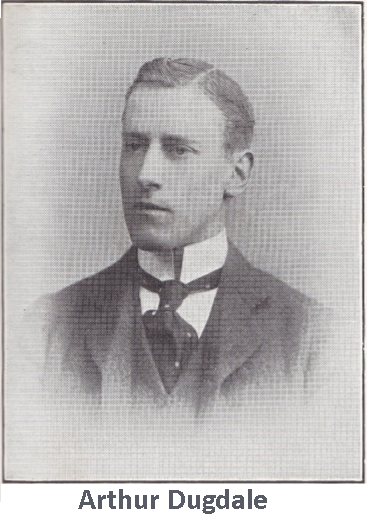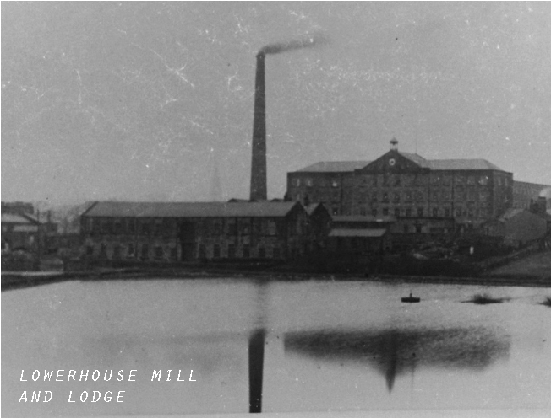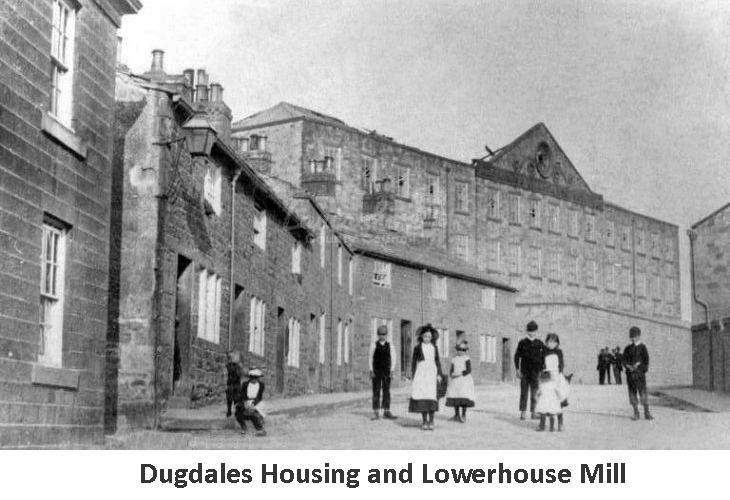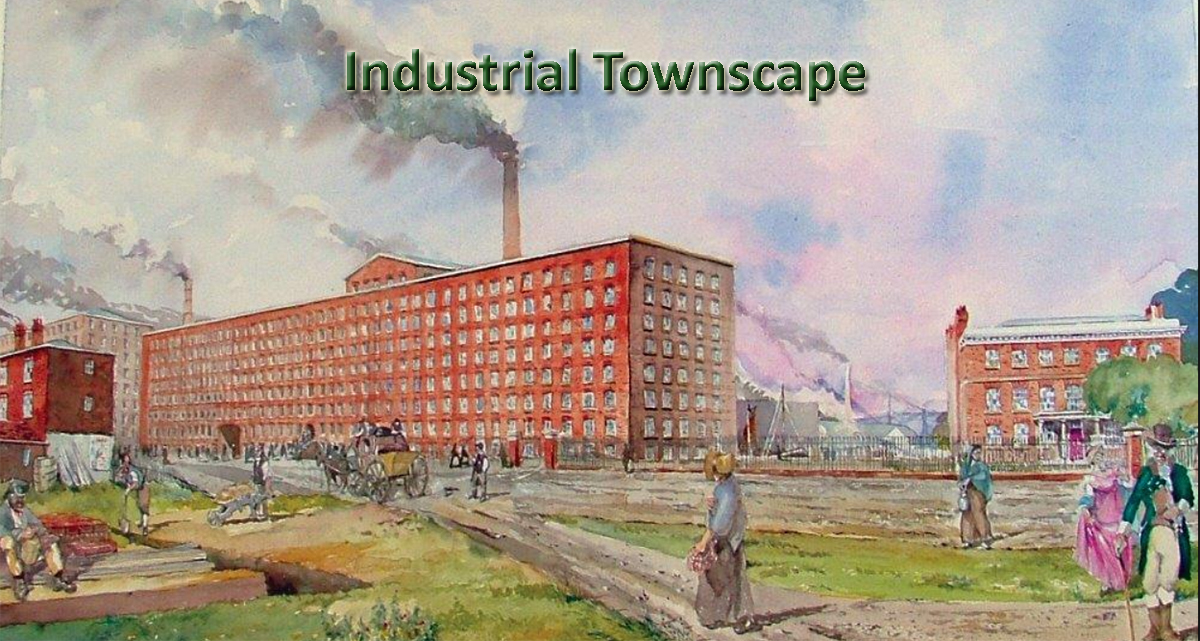 Lowerhouse Mile - Townscape
Lowerhouse Mile - Townscape 
(Page 1 of 4)
Lowerhouse - Industrial Townscape
The Padiham and Lowerhouse townscapes and identities are linked to the parts they played in the textile revolution, and their development created rich and unique
historic environments. The transport routes (road and rail), warehouses, bridges, mills, weaving sheds and chimneys, housing, schools and shops associated with the
industrial revolution still dominate the townscapes today, providing a visual illustration of the connection between the past and the present.

James Dugdale was born into a family of cotton manufacturers and calico printers of Lowerhouse, Padiham, near Burnley.
The business, established in 1797
by his grandfather Nathaniel Dugdale (1761-1816), was expanded by Nathaniel's three sons John, James and William operating as Dugdale Brothers. Nathaniel's stock
book reveals that by 1800 the Dugdales owned 24 jennies and two carding engines producing spun yarn which was distributed to handloom weavers across the Burnley
area, including Crawshawbooth, Huncoat and Padiham.
The Dugdale Brothers diversified and expanded the business, establishing block, plate and roller printing processes at Lowerhouse with a warehouse in Manchester, accumulating assets of £76,229 by 1824. They also invested in land and buildings in central Manchester. Initially cotton spinners, who ‘put out’ warps to local weavers, the Dugdales diversified their business in response to consumer demands and fluctuations in trade at home and abroad.

From the early 1800s a wider range of dyestuffs, made possible through advances in chemistry and the invention of cylinder printing machines, resulted in high volume production of printed calico. What had initially been a luxury cloth available to the wealthy and fashionable elite was now accessible to all levels of society. The Dugdales took advantage of the many advances in printing and dyeing, developing block, plate and roller printing at Lowerhouse from the 1820s whilst continuing to spin yarn and commission cotton cloth. By 1835 cheap printed cotton had dropped to 4d a yard and a dress could be made for 2s 6d bringing it within the reach of large numbers of the population at home and abroad. By 1846 the Dugdales had eight cylinder-printing machines, seventy block printers working 120 tables, five steam engines and a waterwheel at Lowerhouse Mill.
When printed textiles went out of fashion in favour of plainer woven designs, the Dugdales responded by increasing their spinning and weaving operations. By 1891 they had nearly 75,000 spindles and 1531 looms predominantly producing cloth for the Chinese market.As well as owning a large mill complex, part of which still survives, the Dugdales built 108 houses and cottages, a gas works, co-op shop, and a chapel for their workers at Lowerhouse.

On the face of it, they they appeared to be benevolent and paternalistic employers. However in 1842 a Parliamentary Commission revue of the implementation of the 1831 Truck Act revealed that the Dugdales of Lowerhouse might have been flouting the law, charging their workers inflated rents and requiring them to buy goods from the company's shop well above the normal price.
The parliamentary revue also revealed the harsh system of fines in place at Lowerhouse. 'Young Mr Dugdale', perhaps James, comes out of the enquiry particularly badly, as he is accused of beating a worker for a very trivial offence and then extracting heavy fines.



